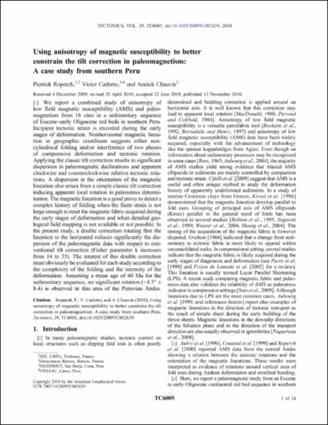Please use this identifier to cite or link to this item:
https://hdl.handle.net/20.500.12544/685Files in This Item:
| File | Description | Size | Format | |
|---|---|---|---|---|
| Roperch-Using_anisotropy of magnetic_susceptibility.pdf | 1.63 MB | Adobe PDF | View/Open |
This item is licensed under a Creative Commons License












